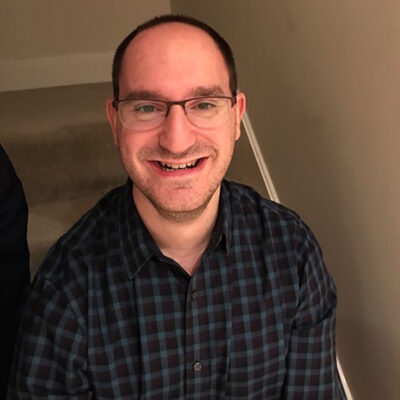The media world is often told that it needs to innovate to survive, forsaking the typewriters and notepads of yesteryear to embrace the beautiful digital future. But what, and who, does that actually look like?
Over the last several years a new archetype of news person has been born, the product person. It’s been cemented in the News Product Alliance, which is celebrating its second anniversary, and in countless discussions of “news nerds” trying to build a better experience for news, and consequently, for the internet at large.
Paul Rissen has spent time at the BBC and Springer Nature before his current stint in Product for Reach PLC, which oversees hundreds of newspapers in the UK. After years in the discipline he has written a book,“Experiment-Driven Product Development: How to Use a Data-Informed Approach to Learn, Iterate, and Succeed Faster” and watched how “product” has morphed from telling a tech team specifications to a more integral part of the newsroom.
“I think the interesting transition has been made away from purely technology as a delivery arm and more to a partnership role where you’re actually interested in the product or news, be that the business model and the packaging of it, all down what journalism *is* and what’s going on within the content itself,” he told Overtone.

Paul Rissen
The emergence of product people, or people realizing that they are product people as is explained in this Nieman Lab piece, has sparked many discussions about what journalism *is* and *should* be in 2022, but also thoughts about what is *could* be.
One of Rissen’s long-running interests is in content annotation of “tagging,” which is near and dear to Overtone’s heart as part of our mission is to make differentiating between various sorts of news articles possible at a speed and scale not possible for human editors.
Tagging traditionally includes everything from format to categories such as “sports,” and has recently expanded into user needs for news, pioneered by Dmitry Shishkin. Rissen says that the traditional “bibliographic” approach to sorting articles and filing them away is useful, but that there are even more possibilities coming.
“What really excites me about tagging is moving beyond just saying this content is tagged with this thing or this content is about this thing, and actually describing the content of the story. So there was an event and it involved these people. And if you capture that as structured data, you can start to connect all of these events together. For me, there’s lots of potential and creativity and future news products there based on the data,” he said.
“If you strip away the article, or the video, ultimately the raw thing you are doing as a journalist is communicating information about what’s happening in the world. The point isn’t tagging. The point is communicating, in this case to a machine so we can store it. So now the information of what’s happening in the world, and then being able to navigate that.”
This reminds me a bit of the concept of the Semantic Web, or Web 3, which came decades before the current ideas of Web 3 that focus on the blockchain and decentralization. It was proposed by Tim Berners Lee, the engineer credited with the invention of the World Wide Web, and focused on having “data with well defined meaning.”
This data with meaning would enable machines to read more of it and be more useful. Similarly to moving away from clicks and shares towards the qualitative data about an article, it is a move towards the content itself, rather than derivative data about the way that people are engaging with it.
“What’s fueling my work is not necessarily like the end goal of logical Semantic Web,” Rissen says.
“But the idea that really inspires me is that a URL doesn’t have to identify an HTML page or video. It can identify essentially a concept, a person, a place or whatever … You start building this web, which actually represents what’s going on in the news and actually represents how people want to navigate and understand and explore connections.”
The next step once that sort of data exists is what newsrooms, and their product people, can do with it. Newspapers, which were once ordinary citizens’ main window on the world and understanding what is happening out there, can start to reclaim part of that role.
Rissen says that he wrote his book for his fellow product people, who are sort of the foot soldiers in building the next generation of news. He says that there is a “false battle going on between quant and qual” but expects that it will become even more integrated in newsrooms.
“There is still that barrier between digital product, the tech/product side and editorial, the people who are on the creative side. I think that’s probably the next part of that journey is the melding of the two.”
